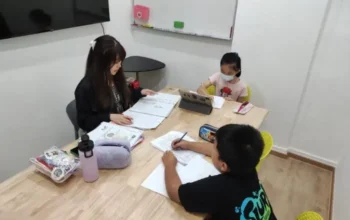Taking a Spanish proficiency test is an important step for anyone looking to certify their language skills for academic, professional, or personal reasons. Among the most recognized and respected exams is the Prueba de español DELE, an official certification awarded by the Instituto Cervantes on behalf of the Spanish Ministry of Education. Understanding what this test entails, its format, and how to prepare can help candidates approach it with confidence and clarity.
The Prueba de español DELE assesses a candidate’s ability to use Spanish effectively in real-life situations. Whether you are a beginner or an advanced speaker, this exam has different levels to match your proficiency, from A1 (basic) to C2 (mastery). To get a comprehensive overview of the exam and to access resources that help with preparation, visiting specialized websites such as aporeldele.com can be very helpful.
Overview of the DELE Exam Structure
The DELE exam is divided into several levels according to the Common European Framework of Reference for Languages (CEFR). Each level corresponds to specific language competencies:
- A1 and A2: Basic user – simple conversations and everyday tasks
- B1 and B2: Independent user – handling most communication in familiar contexts
- C1 and C2: Proficient user – advanced fluency and complex communication
Regardless of the level, the test is designed to evaluate four main skills: reading, writing, listening, and speaking. Each section is carefully structured to test practical language usage, from understanding written texts and audio recordings to producing coherent written responses and participating in spoken interactions.
Detailed Breakdown of the Exam Sections
Reading Comprehension
In this section, candidates are presented with various types of texts, such as emails, articles, advertisements, or official documents, depending on the level of the exam. The goal is to assess the ability to extract relevant information, understand the main ideas, and interpret specific details. Questions may be multiple choice, true/false, or require short written answers.
Listening Comprehension
The listening section tests the ability to understand spoken Spanish in different contexts. Candidates listen to conversations, interviews, announcements, or lectures, then answer questions to demonstrate comprehension. The recordings vary in length and complexity depending on the level. This section challenges the candidate’s ability to grasp accents, intonation, and nuances in speech.
Writing
In the writing section, test-takers are asked to produce texts that fit certain purposes, such as formal or informal letters, essays, reports, or summaries. The tasks increase in difficulty with the exam level and require candidates to organize their ideas clearly, use appropriate vocabulary and grammar, and express opinions or arguments effectively.
Speaking
The speaking test is conducted in a face-to-face interview format, typically with one or two examiners. Candidates must demonstrate fluency, pronunciation, and the ability to engage in conversations on various topics. Tasks may include describing a picture, narrating an experience, or discussing hypothetical situations. This section evaluates both interactive communication and monologue skills.
Timing and Scoring
Each DELE exam level has a different duration, usually ranging from two to four hours, depending on the components involved. The exam’s scoring system is standardized, with each section weighted to contribute to the final grade. Passing all components is necessary to obtain certification.
Candidates receive detailed feedback, including scores for each skill and overall performance. The DELE certificate, once awarded, has no expiration date and is recognized internationally by universities, employers, and government agencies.
Preparing for the DELE Exam
Familiarity with the exam format is crucial for success. Many candidates benefit from using official practice tests and targeted study materials to improve their skills in line with exam requirements. Focusing on weaker areas, such as listening or writing, can make a significant difference.
Candidates are also advised to engage in regular conversation practice and expose themselves to Spanish media, including news, podcasts, and literature, to improve comprehension and vocabulary. Joining study groups or attending preparatory courses can provide structured learning and motivation.
Exam Day Tips
On the day of the exam, it is essential to arrive early and bring the necessary identification documents. Managing time efficiently during the test is important—spending too long on difficult questions can hinder overall performance. Staying calm and focused helps reduce anxiety, allowing candidates to demonstrate their true abilities.
Remember that the DELE is not only a test of language but also of communication skills. Being clear and coherent is often more important than using overly complex language. Examiners value practical language use and the ability to convey ideas effectively.
Conclusion
The Prueba de español DELE is a comprehensive, reliable way to certify your Spanish proficiency. Knowing what to expect on the exam can ease the preparation process and help you approach the test with confidence. By understanding the exam’s structure, practicing regularly, and using the right resources, you can improve your chances of success and earn a valuable certification recognized worldwide.




